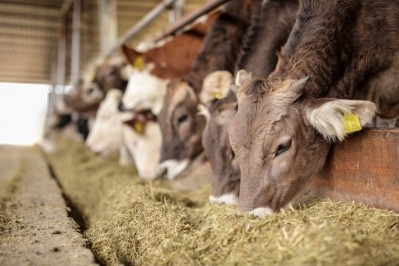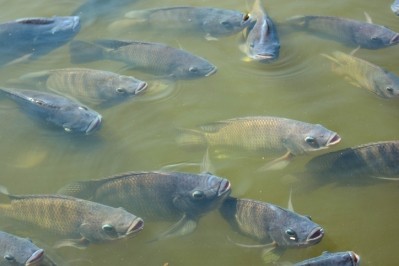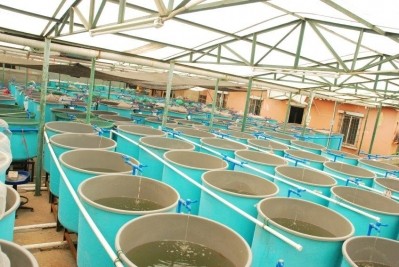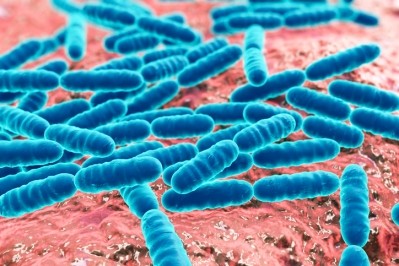Special Edition: Gut health
Young pigs may see gut health boost from added dietary fiber
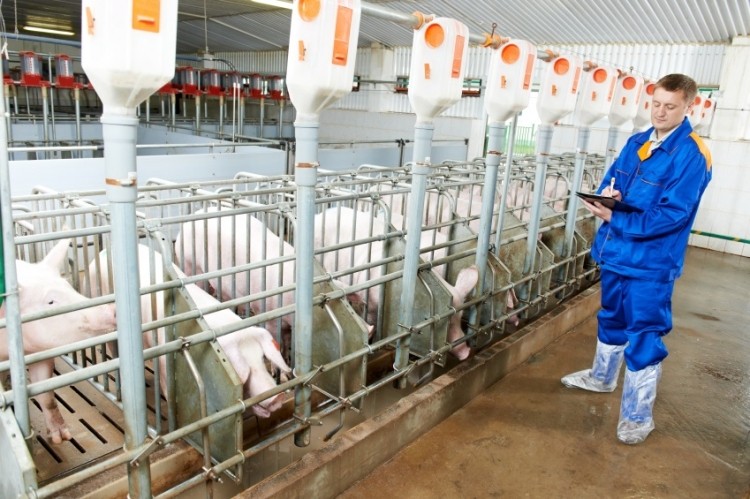
A team of researchers from the University of Hawaii at Manoa reviewed the interaction of dietary fiber (DF) and protein fermentation on gut health in swine. The group published its work in the journal of Animal Feed Science and Technology.
“This paper has reviewed different aspects of DF and CP [crude protein] in swine nutrition,” the researchers said. “More specifically, DF and protein fermentation, and their pathways and end metabolic products are first briefly reviewed. Also, the nutritional approaches to reduce protein fermentation, the relation between [carbohydrates] CHO [both fiber and resistant starch, (RS)] and protein fermentation and its effects on gut health, bacterial protein synthesis as well as odor emission from pig manure have been highlighted.”
The work has led to an ongoing focus on the use of different kinds of fiber in swine diets, said Rajesh Jha, corresponding author and associate professor of animal nutrition and graduate chair of animal science at the University of Hawaii.
“I am working on evaluating different types of fiber with specific physico-chemical characteristics and their effects on specific gut health parameters (gut microbiota, immune-related response and gene expression and histomorphology),” he told us.
The research team also published a second work looking at the use of dietary fiber and its physiological functions on gut health in swine in the Animal Consortium.
In the review work, the group concluded that adding dietary fiber while limiting the amount of CP may improve gut health in young swine, the researchers said.
“Overall, inclusion of DF and reduction of CP in pig diets seems to be an effective nutritional strategy that may counteract the negative effects of protein fermentation in the pig gut by reducing ammonia concentration, shifting N excretion pathways in the gut and minimizing the negative impact of intensive pig production on the environment,” they said.
Why swine gut health and diet?
Swine production systems have been criticized for their generation of nitrogenous gases, which can cause nasal irrigation and growth depression in pigs, along with other concerns, said the researchers. Several alternatives have been suggested including changing diets to reduce the production of odor and nitrogenous gases.
“The effectiveness of these nutritional strategies in reducing nitrogenous gases and odor emission from piggeries and improving gut health and bacterial protein synthesis are based on the effects of diet composition, especially dietary fiber (DF) and protein, on nutrient digestibility and metabolism, and on the fermentation rates in the large intestine,” they said.
Ammonia emissions emanate predominately from urea, while nitrogen in fecal matter is mainly generated by undigested dietary nitrogen (N), they said.
The use of DF in diets may be linked to reducing ammonia emission and improving gut health, the researchers said. DF is fermented by bacteria in the gut, which generates short chain fatty acids (SCFA) and promotes the growth of beneficial bacteria.
“The gut bacteria induce a shift of N excretion from urea in urine to feces,” said the researchers. “On the other hand, the urea concentration in manure is highly dependent on protein nutrition and can be altered by changing dietary protein content.”
Lowering the amount of crude protein used in the diet and balancing for amino acids (AA) may decrease total N excretion while maintaining performance and carcass quality in pigs, they said.
Additionally, odors may be produced by microbial conversion of feed components in the large intestine or, after excretion, by microbial conversion in anaerobic conditions, they said. It is often considered the protein fermentation in the gastrointestinal tract (GIT) is emits the most offensive sensory response – which points to altering CP to reduce odor.
Suggestions and considerations
In a pig’s GIT, digestion starts in the stomach, most of the available nutrients including carbohydrates, protein, fats minerals and vitamins are absorbed in the small intestine and undigested feed components and endogenous secretion are fermented by microorganisms in the large intestine, the researchers said.
Proteins used for fermentation by bacteria are predominately those that escaped digestion in the small intestine, they said. Of fermented protein, some of the result becomes SCFA while other elements produced include potentially toxic metabolites like ammonia and amines and malodorous compounds including skatole and indole.
Such compounds may be excreted in the urine and in fecal matter, they said. And undigested protein in feces also can produce indolic, phenolic and sulfurous compounds through additional fermentation in the manure.
However, reducing the amount of CP can limit protein fermentation in the gut, they said
“The fermentation of undigested dietary protein and proteins of endogenous origin entering the large intestine yields putatively toxic metabolites that can impair epithelial integrity and promote enteric disorder such as the incidence of post-weaning diarrhea (PWD),” said the researchers. “Most of the published work on piglets (Nollet et al., 1999; Htoo et al., 2007; Wellock et al., 2008) shows that feeding a low-protein diet after weaning decreased intestinal flow of N and protein fermentation indices in the GIT and that this is linked to a reduction in the incidence of PWD.”
A comparison of a high-protein diet and low-protein diet reported that a larger N flow led to more N available for bacterial fermentation in the distal gut, they said. Several bacterial species including Escherichia coli and Campylobacter spp are known to be protein fermenters.
E. coli is often linked with reduced growth and weight gain in young pigs, however in a study that examined an E. coli challenge with a low-protein diet found a reduction in diarrhea incidence, they said. “It suggests that protein fermentation selectively affects the microbiota in the gut and can influence the pig's health condition,” they added.
In regards to N emissions and ammonia production, one suggestion has been reducing CP intake, they said. Limiting unbalanced protein and AA levels and not exceeding dietary requirements could reduce the amount of N excreted by the animal.
“Confirming the model estimate, Mohn and Susenbeth (1995) found that a reduction of 200 g/kg in dietary protein can reduce N excretion by up to 35%, if the low-protein diets offer adequate AA concentration,” said the researchers. Related research found that for every 10g/kg of CP cut from a diet the amount of ammonia in manure fell by 10% and ammonia emissions by 10-12%, they added.
Additionally, dietary fiber has been considered as a way to improve gut health based on its fermentation activity and responses, they said. The negative effects found from adding fiber to a swine diet can differ among sources.
“Beneficial effects of DF on intestinal functions and on the bacterial profile and fermentation are related to changes in the physicochemical characteristics of the digesta, including transit time, solubility, fermentability, viscosity or water retention capacity of the digesta,” they said. Use of DF in a diet also can alter the type and activity of microbiota in the GIT, which may help protect an animal against intestinal disorders, they added.
Previous research has suggested that diets with little soluble NSP, oligosaccharides or RS were able to limit clinical dysentery in pigs facing a disease challenge, while a diet with oat hulls reduced incidence of PWD, they said. Fiber also has been used to reduce ammonia emissions although some DF types may be more effective than others in reducing N loss in manure.
Conclusions
Overall, reducing the amount of CP in swine diets while adding a moderately fermentable fiber source should limit the generation of microbial metabolites in the large intestine and reduce the instances of intestinal disorders in pigs, said the researchers.
“The inclusion of DF and reduction in dietary protein content can be used as a nutritional strategy to optimize intestinal health of early-weaned pigs,” they said.
When a fermentable fiber source is added to the diet, there is a high bacterial N uptake, they said. That interaction suggests that when there are higher levels of fiber substrate for fermentation the microbiota in the large intestine keep more N for their own growth, which limited the amount of N excreted.
“Dietary CP and DF manipulation is an effective tool to reduce nitrogenous gases from piggeries,” they said. “Nitrogen excretion, ammonia emission from pigs, and manure concentrations of odorous compounds can be reduced substantially by strategically decreasing dietary protein and increasing fermentable fiber in pig diets, although the effect of changes in content of DF is relatively less complex than is the case for protein reduction.”
Source: Animal Feed Science and Technology
Title: Dietary fiber and protein fermentation in the intestine of swine and their interactive effects on gut health and on the environment: A review
DOI: doi.org/10.1016/j.anifeedsci.2015.12.002
Author: R. Jha and J. Berrocoso
